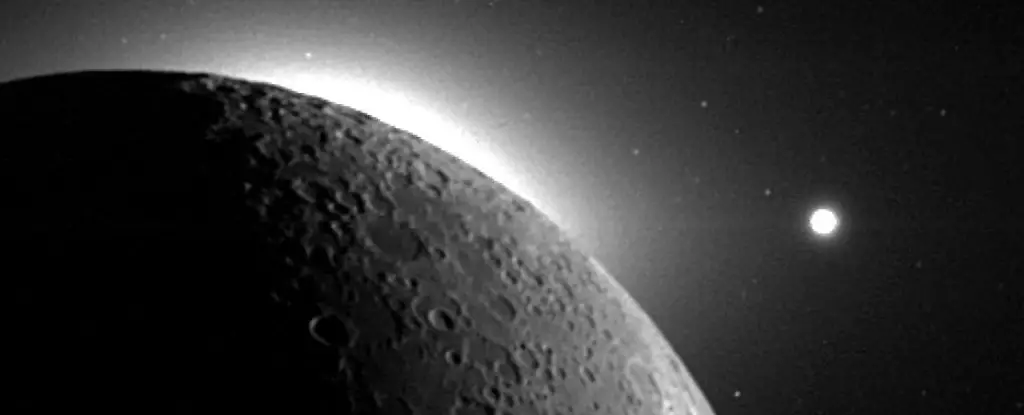The relationship between Earth and its Moon is a captivating narrative of celestial dynamics. Unlike other planets in the Solar System, which either host multiple moons or none, our planet has a unique relationship with a single, sizable satellite. This intricate bond raises profound questions about the origins of the Moon and the history of planetary formation. The prevailing theories of moon formation, particularly the widely accepted Giant Impact Hypothesis, may soon face competition from new research that challenges our understanding of how moons may be acquired.
Understanding the Uniqueness of Earth and Its Moon
One of the most significant discussions surrounding the Moon is the peculiar mass ratio it shares with Earth. As scientists probe the evolutionary pathways of celestial bodies, one theory suggests that the Moon is either a sibling or a direct offspring of Earth, forged from the same materials in the early Solar System. However, fresh insights are emerging, raising a plausible alternative: could the Moon have been formed elsewhere and later captured by Earth’s gravitational pull?
Researchers Darren Williams and Michael Zugger from Pennsylvania State University are at the forefront of this inquiry. They have employed mathematical modeling to explore the potential for gravitational capture of moons by terrestrial planets. Their findings imply that it is indeed feasible for a body similar to the Moon to have originated in a different region of the Solar System and been later ensnared by Earth’s gravity, reshaping our understanding of planetary systems.
The mineral composition of Earth and the Moon presents a compelling piece of evidence in the formation debate. The two celestial bodies display strikingly similar mineral makeup, leading to the assumption that they likely emerged from the same cosmic dinner plate of materials. The Giant Impact Hypothesis posits that a substantial object collided with Earth, resulting in debris that ultimately formed both Earth and its Moon.
While this hypothesis remains a strong contender, alternative explanations exist. For instance, some researchers propose that the Moon could have formed within a synestia—a vast cloud of vaporized rock from a planetary collision—or simultaneously with Earth from a shared dust cloud orbiting the Sun. These scenarios underscore the complex nature of moon formation and the myriad ways in which one celestial body can acquire another.
The exploration of binary capture as a potential mechanism for moon acquisition is gaining traction. In binary capture, two celestial bodies, already gravitationally bonded, interact with a third body, which ultimately captures one of the partners. This scenario offers an intriguing alternative account of how Earth might have come to possess its Moon. Analogies can be drawn from observable cosmic phenomena, as even our Solar System contains binary and trinary asteroid systems.
One fascinating example of binary capture is Triton, a moon of Neptune. Triton orbits in the opposite direction of Neptune’s other moons, a characteristic that suggests it was pulled into Neptune’s orbit from the Kuiper Belt. Williams and Zugger argue that similar processes could have unfolded in our system, potentially explaining aspects of the Moon’s unconventional orbit.
Williams and Zugger’s mathematical modeling indicates that if Earth could capture a body the size of the Moon, it might have also ensnared larger objects like Mercury or Mars. These findings challenge the stability of the Moon’s current orbit but suggest that the capture of an object comparable to the Moon could result in a more stable elliptical orbit that gradually circularized, mimicking the Moon’s current slow recession from Earth at a rate of approximately 3.8 centimeters per year.
Yet, as compelling as this theory may be, it does not negate the importance of other properties connecting Earth and the Moon. The mineral and isotopic similarities present evidence that suggest a more intimate relationship than one arising purely from capture, indicating that further investigation into both scenarios is warranted.
Understanding the origin of our Moon is crucial, not only for comprehending our planetary system but also in our quest to identify habitable exoplanets beyond our Solar System. The Moon’s influence on Earth, particularly in shaping tidal patterns and stabilizing its axial tilt, has played an essential role in the development of life as we know it. As such, insights gained from examining the Earth-Moon dynamic may serve as a guide in the search for life-supporting conditions on distant worlds.
As Williams aptly points out, the mystery of the Moon’s formation remains unresolved. For decades, the Giant Impact Hypothesis has dominated the dialogue surrounding its origins, but recently introduced theories suggest a broader range of possibilities. As we continue to explore these cosmic puzzles, each new piece of evidence—whether it reinforces an old theory or sparks hypotheses of new ones—brings us closer to unveiling the secrets of our lunar companion and our own planet’s fascinating history.


Leave a Reply